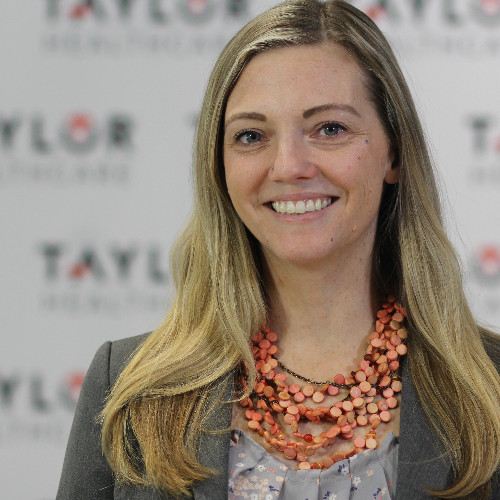Top 5 Challenges Facing Healthcare Organizations in 2019
Evolving challenges lead to opportunities for healthcare organizations


Chelsea Youngquist
Director of Marketing
Healthcare continues to experience its share of new challenges and opportunities. Rising costs impact every aspect of business operations, and diverse healthcare offerings grow more complex by the day. That said, overarching goals tend to remain consistent across healthcare organizations: reduce risk, increase efficiency, maintain compliance, improve patient outcomes and recruit and retain employees.
- RISK: Regulation changes
According to PwC, healthcare organizations might soon have to restructure their businesses to accommodate new rules and liabilities. These changes might have an impact on the cost of medical goods or disrupt the supply chain. Healthy individuals and small businesses seeking lower premiums might benefit from these regulation changes, but middleclass consumers looking for comprehensive care might not fare as well — potentially making them less likely to seek medical services than they do now.
- EFFICIENCY: Technology and digital advances
We are witnessing the Internet of Things (IoT) mesh with telemedicine and telehealth technologies, creating a new Internet of Medical Things. This has led to patient experience improvements, increased profitability and greater efficiency through advances like:
- mobile devices and apps to help prevent, track and manage chronic illnesses;
- wearable ECG and EKG monitors;
- medical measurements for skin temperature, glucose levels and blood pressure; and
- “smart” pills to deliver medications.
Digital therapeutics is an emerging health discipline that uses technology to supplement or possibly replace medications in the treatment of disease. Connected health services, which refers to care supported by devices that transmit data or connect to the internet, give additional visibility into patient treatments and new ways to improve outcomes.
As healthcare organizations embrace our digital future, the life sciences industry will continue to be reshaped by developments such as patient portals, online tools, smartphone apps, digital payment methods, connected care and digital therapies. Virtual and augmented reality (VR and AR) solutions are leading to significant advances in healthcare technologies. From educating new students to planning procedures, the fields of VR and AR offer serious promise for healthcare.
- COMPLIANCE: Data managementand security
Healthcare is at a crossroads when it comes to data and analytics. Healthcare organizations recognize that they must gather, analyze and apply data in meaningful ways to deliver high-quality patient care while adhering to privacy, safety, billing and reporting requirements. They must leverage data to manage patient health, drive decisions and protect consumer information privacy and security in a world with sophisticated cyberattacks and increased data breaches.
Cybersecurity: In 2017, the U.S. medical and healthcare sector experienced more than 350 data breaches, exposing 4.93 million patient records. Improving cybersecurity requires dedicated resources to ensure that systems are properly protected against cybercriminals.
On a positive note, blockchain technologies are allowing for fast, secure and transparent peer-to-peer transfers of digital information. And according to GlobalData, a leading data and analytics company, the use of big data “will increase dramatically in 2019” whereas artificial intelligence (AI) will become a “transformational force in healthcare.” Core functions include:
- Electronic health records (EHR)to identify trends, lower treatment costs and improve quality of life
- Healthcare intelligenceto revolutionize the tracking of patient statistics and vital signs
- Hospitals and healthcare systems to predict healthcare outcomes and design treatment protocols
- Drug discovery and designto determine potential drug candidates
- Clinical trialsfor real-time monitoring
4. OUTCOMES: Patient experience
Patient experience has become a top focus for many healthcare organizations. Delivering a patient experience that meets — and exceeds — expectations is similar to providing a good customer experience in retail. Increasingly, healthcare decision-makers are looking for ways to improve digital health and optimize patient care from two perspectives: total consumer health (which involves improving consumers’ medical, social, financial and environmental well-being) and population health services (which focuses on community-based health strategies, chronic care management, clinical integration and health barrier reduction).
What’s driving this trend? As more patients must pay a larger portion of their own healthcare bills, they demand better services from their providers. Healthcare organizations will face tougher competition in terms of attracting and retaining patients who expect the same level of customer service they receive from other consumer brands. They want self-service options that are convenient and a digital experience like that of Amazon.
Salesforce.com offers four ways healthcare marketers can get up to speed:
- Use data as the starting point to understand the patient
- Get personal with meaningful marketing
- Wake up to the power of mobile
- Analyze your campaigns and pivot quickly
- EMPLOYMENT: Recruitment and retention
It’s no surprise that Health eCareers’ “2018 Healthcare Recruiting Trends Report” found that healthcare employers are dealing with critical shortages of physicians, physician assistants and nurse practitioners in primary care and specialties such as psychiatry, orthopedics, cardiology and neurology. Higher salary offers and benefits such as sign-on bonuses and continuing medical education allowances are common recruiting tactics.
Retention is equally important. The Health eCareers survey also found that three key drivers of turnover are management, senior leadership and job fit. Healthcare organizations must address employee burnout in order to combat this negative trend. Programs that support employee engagement and recognition might also help.
